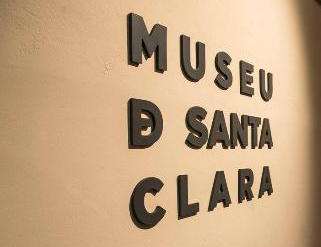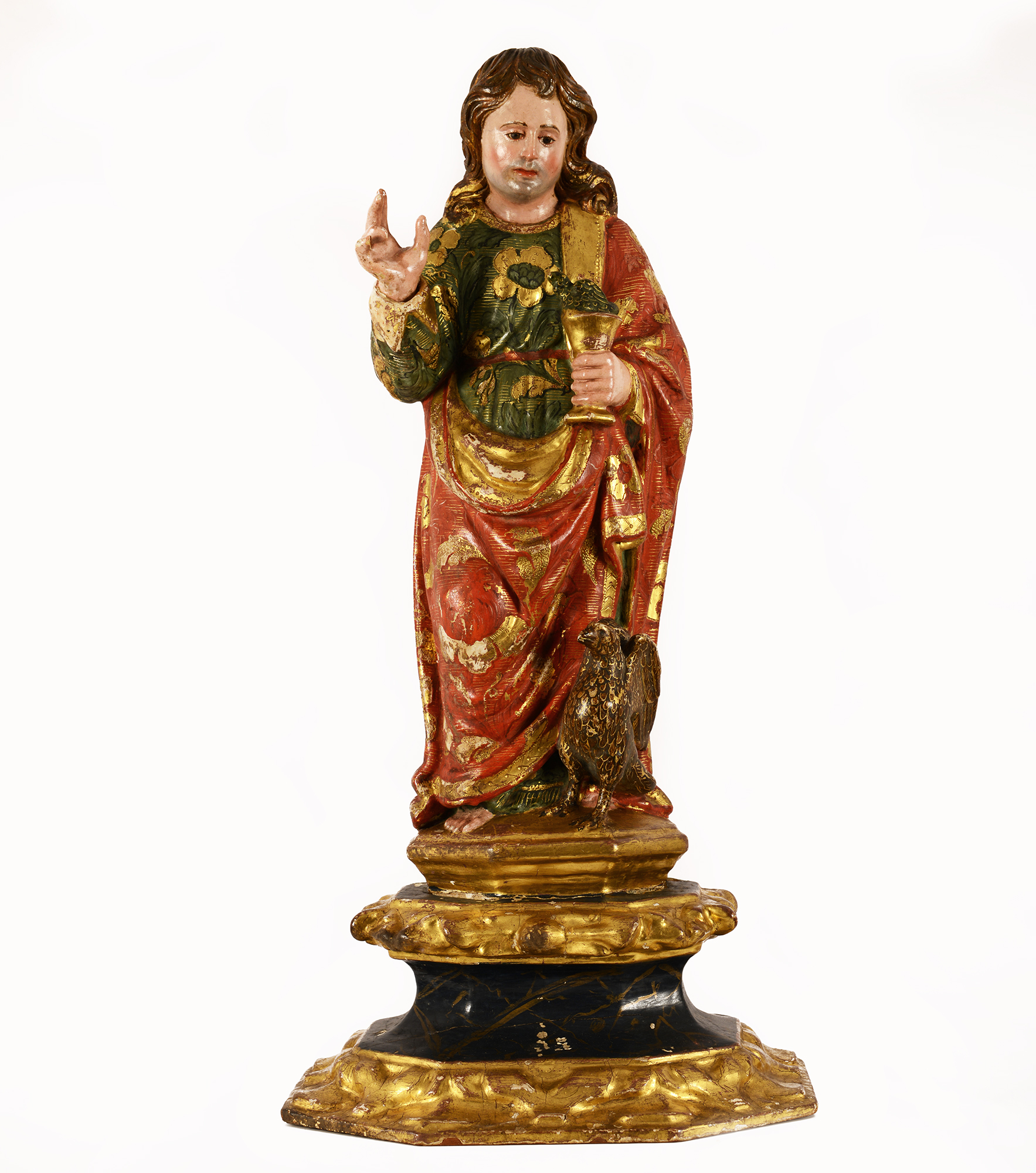17th century Hispanic workshop
Carved, polychromed and gilded wood.
This sculpture represents Saint John the Evangelist in a solemn and devotional pose. The Saint is standing with his right hand raised in blessing and his left hand holding a chalice from which emerges a group of snakes or a bunch of grapes, a symbolic element linked to his legend, according to which he survived being poisoned in a cup. Next to him, at the base, is the eagle, a traditional iconographic attribute of the Evangelist, symbolising the spiritual elevation of his Gospel.
The carving is notable for its rich polychromy and gilded estofado, visible on both the red cloak and the green tunic, both decorated with stylised plant motifs. The serene expression of the face, the wavy hair and the restrained gestures reinforce the devotional nature of the work, typical of Andalusian Baroque sculpture intended for private or monastic environments.
The figure rests on a moulded octagonal base, painted in black with veins imitating marble and crowned with a gilded decoration. The quality of the stew and the good preservation of the original polychromy make it possible to appreciate the technical expertise of the workshop that executed it. This image was part of the repertoire of devotional figures that encouraged meditation on the life and writings of the Evangelists in the context of Baroque piety.

